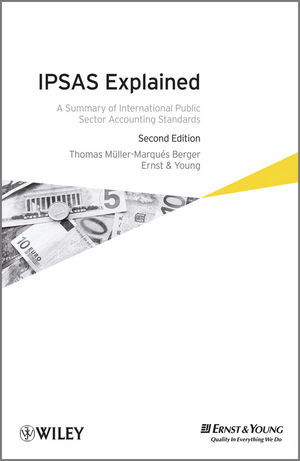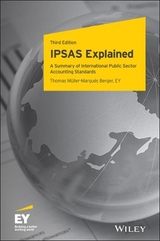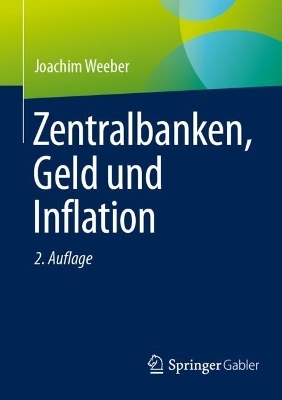
Ipsas Explained - a Summary of International Public Sector Accounting Standards 2E
John Wiley & Sons Inc (Verlag)
978-1-118-36871-8 (ISBN)
- Titel ist leider vergriffen;
keine Neuauflage - Artikel merken
Global diversity in the practice of public sector accounting continues to impede the reduction of bureaucracy and the creation of comparable standards in terms of accountability and transparency. The International Public Sector Accounting Standards Board (IPSASB) continues to engage in the ongoing process of harmonizing public sector accounting with their International Public Sector Accounting Standards (IPSASs). IPSAS Explained: A Summary of International Public Sector Accounting Standards, Second Edition provides up to date information on the Conceptual Framework Project and other projects related to IPSASs, along with details of all the current IPSASs, including newly approved standards of the Board, especially those relating to financial instruments, intangible assets and service concession arrangements from a grantor perspective. Each IPSAS is distilled into a useful and accessible summary, and illustrated with graphs, figures and tables. Beyond that the book focuses on the current sovereign debt crisis and discusses possible implications for public sector financial management.
Through an examination of the objectives of the standards and an overview of the principles relevant to key topics such as the accrual basis of accounting as against cash basis, fair value, present value, cost, and measurement bases, IPSAS Explained provides decision-makers in the public sector with a thorough grounding on the IPSASs and the operations of the IPSASB.
Thomas Muller-Marques Berger (Stuttgart, Germany) is a partner at Ernst & Young GmbH and currently serves as the firm's Global Leader of International Public Sector Accounting. Thomas has been a member of the International Public Sector Accounting Standards Board (IPSASB) since January 2009, with his term recently being renewed until the end of 2014. Before joining the IPSASB, he was a member of the IFAC Public Sector Steering Committee on Social Policy Obligations, a subgroup of the IPSASB, during 2003 and 2004. He has also been a member of the FEE Public Sector Committee (European Federation of Chartered Accountants) since 2003, and was appointed Chair in January 2012. At a national level, he has been a member of the German Public Sector Committee at the German Institute of Chartered Accountants (Institut der Wirtschaftsprufer in Deutschland (IDW)) for almost 10 years.
Foreword VII Contents IX Abbreviations XII I. Introduction: General information about IPSASs and the IPSASB 1 1 The International Public Sector Accounting Standards Board 1 1.1 General information 1 1.2 Structure and organization of the IPSASB 2 1.3 Objectives of the IPSASB 4 1.4 Oversight of the IPSASB 4 1.5 Members of the IPSASB 6 2 International accounting standards for the public sector 7 2.1 Overview of international accounting standards for the public sector 7 2.2 History of the International Public Sector Accounting Standards 10 2.3 Scope of the International Public Sector Accounting Standards 10 2.4 General purpose financial statements 11 2.5 Authority of the International Public Sector Accounting Standards 11 2.6 Strategy of the IPSASB 13 2.7 The Conceptual Framework project 14 2.8 Other current projects of the IPSASB 19 2.9 Process for reviewing and modifying IASB documents 24 2.10 Procedures for developing accounting standards 27 2.11 IPSASs for accrual basis of accounting and cash basis of accounting 30 2.12 Background to the application of international accounting standards for the public sector 31 2.13 Provisions for the transition from the cash basis to the accrual basis of accounting 33 3 Measurement bases in accordance with IPSASs 34 3.1 Cost 34 3.2 Fair value 36 3.3 Present value 37 II. Impact of the global financial crisis and the sovereign debt crisis on public sector accounting 38 1 Context of the global financial crisis 2008-2009 38 2 Accounting issues relating to public sector interventions 40 2.1 Accounting for recapitalization or investments 41 2.2 Accounting for fiscal support 42 2.3 Accounting for financial guarantees 43 3 The sovereign debt crisis 44 3.1 Evolution of the crisis 44 3.2 Major measures taken to solve the crisis in 2010 and 2011 46 3.3 Effects of the sovereign debt crisis on public sector financial management48 III. Overview of accrual basis IPSASs 51 IPSAS 1: Presentation of Financial Statements 51 IPSAS 2: Cash Flow Statement 60 IPSAS 3: Accounting Policies, Changes in Accounting Estimates and Errors 65 IPSAS 4: The Effects of Changes in Foreign Exchange Rates 70 IPSAS 5: Borrowing Costs 73 IPSAS 6: Consolidated and Separate Financial Statements 76 IPSAS 7: Investments in Associates 82 IPSAS 8: Interests in Joint Ventures 86 IPSAS 9: Revenue from Exchange Transactions 90 IPSAS 10: Financial Reporting in Hyperinflationary Economies 95 IPSAS 11: Construction Contracts 97 IPSAS 12: Inventories 101 IPSAS 13: Leases 106 IPSAS 14: Events after the Reporting Date 112 IPSAS 15: Financial Instruments: Disclosure and Presentation 116 IPSAS 16: Investment Property 120 IPSAS 17: Property, Plant and Equipment 125 IPSAS 18: Segment Reporting 133 IPSAS 19: Provisions, Contingent Liabilities and Contingent Assets 136 IPSAS 20: Related Party Disclosures 142 IPSAS 21: Impairment of Non-Cash-Generating Assets 145 IPSAS 22: Disclosure of Information About the General Government Sector 150 IPSAS 23: Revenue from Non-Exchange Transactions (Taxes and Transfers) 153 IPSAS 24: Presentation of Budget Information in Financial Statements 160 IPSAS 25: Employee Benefits 165 IPSAS 26: Impairment of Cash-Generating Assets 175 IPSAS 27: Agriculture 181 IPSAS 28: Financial Instruments: Presentation 186 IPSAS 29: Financial Instruments: Recognition and Measurement 189 IPSAS 30: Financial Instruments: Disclosures 195 IPSAS 31: Intangible Assets 199 IPSAS 32: Service Concession Arrangements: Grantor 206 IV. Overview of current Exposure Drafts 216 IPSAS ED 46: Recommended Practice Guideline: Reporting on the Long-Term Sustainability of a Public Sector Entity s Finances 216 IPSAS ED 47: Financial Statement Discussion and Analysis 224 V. Cash Basis IPSAS 229 Cash Basis IPSAS: Financial Reporting Under the Cash Basis of Accounting 229 Further reading 236
| Erscheint lt. Verlag | 2.7.2012 |
|---|---|
| Verlagsort | New York |
| Sprache | englisch |
| Maße | 159 x 232 mm |
| Gewicht | 1 g |
| Themenwelt | Sozialwissenschaften ► Politik / Verwaltung ► Staat / Verwaltung |
| Wirtschaft ► Betriebswirtschaft / Management ► Rechnungswesen / Bilanzen | |
| ISBN-10 | 1-118-36871-1 / 1118368711 |
| ISBN-13 | 978-1-118-36871-8 / 9781118368718 |
| Zustand | Neuware |
| Haben Sie eine Frage zum Produkt? |
aus dem Bereich



